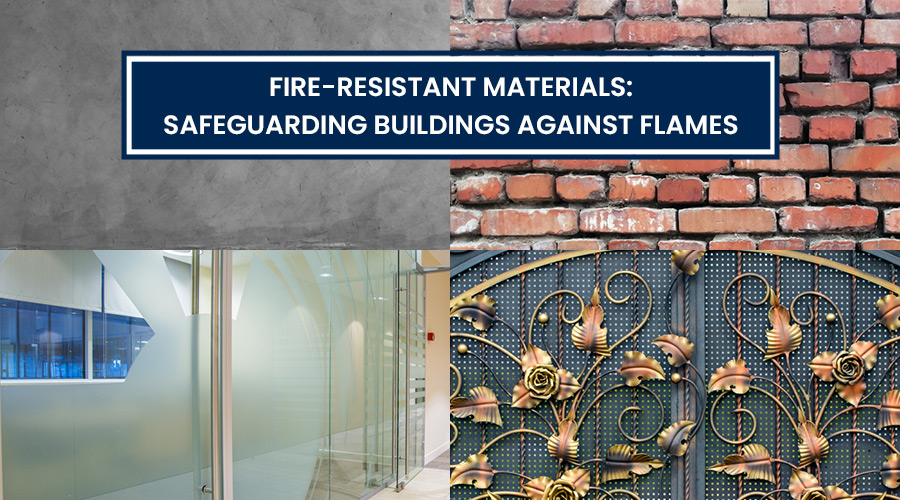Introduction
In the face of increasing incidents of devastating fires, protecting buildings from the rapid spread of flames has become an essential priority. Fire-resistant materials play a vital role in mitigating the risk of fire-related disasters and ensuring the safety of both occupants and structures. This blog explores several materials specifically designed to resist fire, discussing their properties, applications, and contributions to building fire safety.
Fire-Resistant Glass
Fire-resistant glass is a remarkable material designed to maintain its integrity under high temperatures and protect against the spread of flames and smoke. It consists of multiple layers of tempered or laminated glass, with an interlayer that expands when exposed to heat, creating an insulating barrier. Fire-resistant glass helps compartmentalize spaces, preventing fire and smoke from spreading, while providing essential visibility for evacuation purposes.
Fire-Retardant Coatings
Fire-retardant coatings are applied to various building materials, such as wood, steel, and concrete, to enhance their resistance to fire. These coatings work by forming a protective layer that delays the combustion process. Intumescent coatings, for example, swell when exposed to heat, creating a char layer that insulates the underlying material, thereby slowing down the spread of flames.
Fire-Resistant Doors
Fire-resistant doors are critical components of building fire safety systems. Constructed using fire-resistant materials such as metal, gypsum, or solid timber, these doors provide a barrier against flames, smoke, and heat, allowing occupants to safely evacuate and emergency personnel to access affected areas. Fire-resistant doors are rated based on their ability to withstand fire for a specific duration, typically measured in minutes.
Fire-Resistant Insulation
Insulation materials play a significant role in preventing the spread of fire within buildings. Fire-resistant insulation is typically made from non-combustible materials, such as mineral wool or fiberglass, which offer excellent thermal insulation while resisting flames and high temperatures. By impeding the transfer of heat, fire-resistant insulation helps contain fires and reduces the risk of structural damage.
Fire-Resistant Structural Elements
Structural elements, including columns, beams, and floor systems, can be reinforced with fire-resistant materials to enhance their ability to withstand fire. Intumescent coatings, concrete encasement, and fire-resistant boards are commonly used to protect structural components from high temperatures, preventing their premature failure and maintaining the overall integrity of the building.
Conclusion
Fire-resistant materials are indispensable in safeguarding buildings from the devastating consequences of fires. By incorporating these materials into construction and retrofitting projects, we can create more fire-safe environments that minimize the spread of flames, allowing for effective evacuation and reducing property damage. As technology advances, the development of innovative fire-resistant materials continues to drive improvements in building fire safety, offering a promising future where the risk of fire-related disasters can be significantly reduced.

